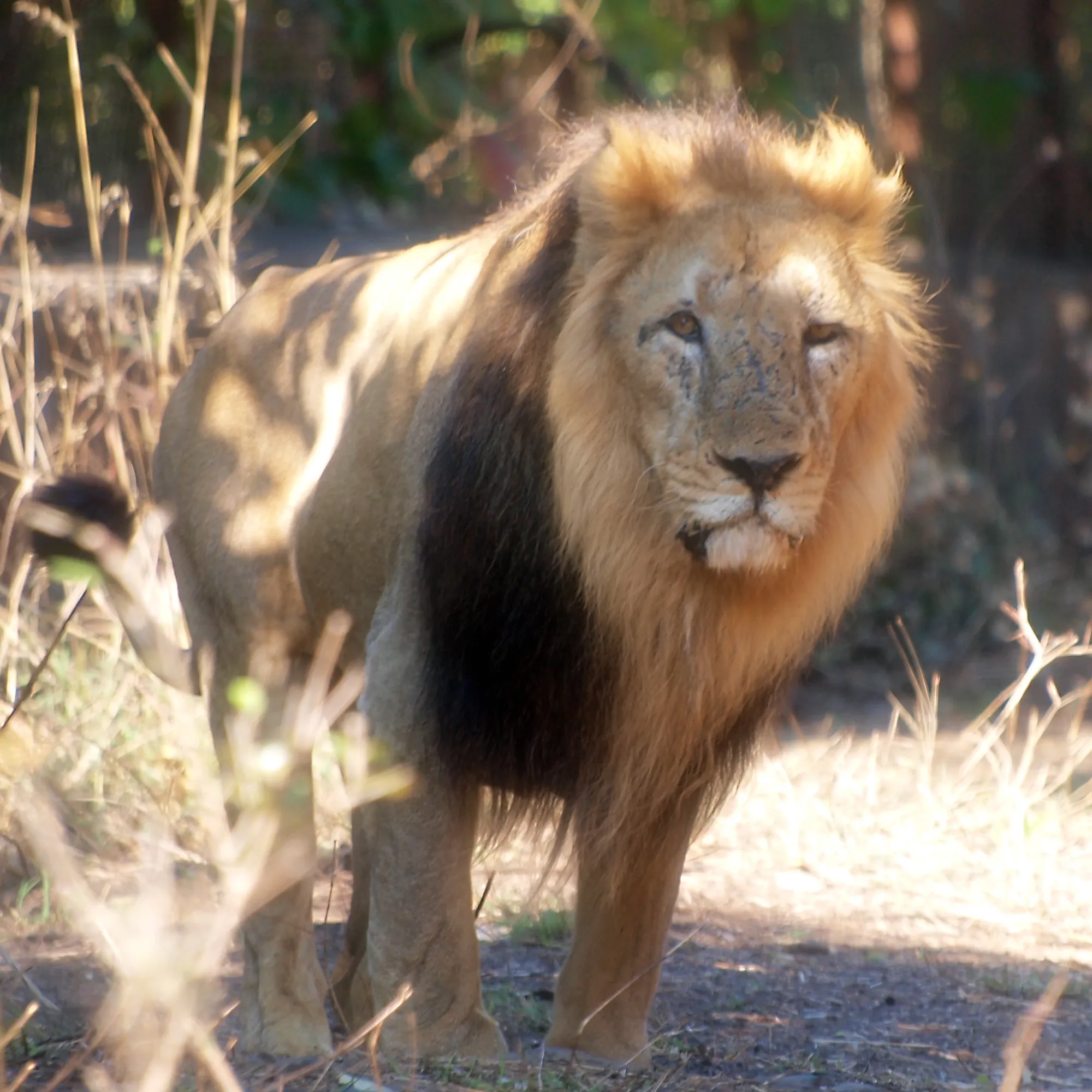
Asiatic Lion
Asiatic Lion
Asiatic Lion
The Asiatic lion, a majestic creature that lives proudly in the forests of India. Once widespread from India to the Middle East, they now survive only in a few forests in India. Let's explore the ecology of the Asiatic lion and the efforts to save them from the brink of extinction.
Asiatic Lion Basic Infomation

| Property | Value |
|---|---|
| Scientific Name | Panthera leo persica |
| Taxonomic Status | SUBSPECIES |
| Rank | SPECIES |
| Vernacular Names | Asiatic Lion |
| Kingdom | Animalia |
| Phylum | Chordata |
| Class | Mammalia |
| Order | Carnivora |
| Family | Felidae |
| Genus | Panthera |
| Habitats | Gir Forest, Gujarat, India |
| Descriptions | The Asiatic lion is a subspecies of lion found only in the Gir Forest of Gujarat, India. It was once widely distributed from India to the Middle East but is now endangered. It is characterized by its smaller size and shorter mane. |
| Conservation Status | Endangered |

Size
They measure about 2.3 to 2.6 meters in length (including tail), with males weighing around 160 to 190 kilograms and females weighing 110 to 120 kilograms. They are slightly smaller than African lions.

Lifespan
They live for about 10 to 14 years in the wild.

Distribution
Once widely distributed from India to the Middle East, they are now found only in the Gir Forest National Park and surrounding areas in the state of Gujarat, India.
Asiatic Lion Q&A

What kind of lion is the Asiatic lion?
The Asiatic lion is a subspecies of the African lion. They are smaller than African lions, have shorter manes, and a distinctive fold of skin on their bellies.
Male Asiatic lions also have a small black spot on the elbow of their forelegs. They are adapted to the dry deciduous forests of India. Once widely distributed throughout India and the Middle East, they are now found only in the Gir Forest National Park and surrounding areas in the state of Gujarat, India.

What do Asiatic lions eat?
Asiatic lions are carnivores and primarily prey on deer, wild boar, water buffalo, and antelope. They hunt in groups, chasing their prey and bringing it down.
Female lions are the primary hunters. They are excellent hunters and work together to corner their prey. Male lions do not usually participate in the hunt, preferring to steal kills or defend them from other predators. Lions may also eat birds, reptiles, and fish. In the winter, when food is scarce, they may scavenge on carrion.

What kind of lives do they lead?
Like African lions, Asiatic lions live in groups called 'prides.' A pride typically consists of one male, several females, and their cubs.
Pride members cooperate with each other to hunt, raise their young, and defend their territory. The size of a pride can vary from a few individuals to several dozen. The leader of the pride is the strongest male lion. He must fight other male lions to protect his pride and earn the right to mate with the females.

[Quiz!] Why are Asiatic lions endangered?
Asiatic lions were once widely distributed from India to the Middle East, but are now found only in the Gir Forest National Park and surrounding areas in the state of Gujarat, India.
The main reasons for their drastic decline are due to human activities:
・Habitat loss: Deforestation and agricultural development have destroyed their habitats.
・Poaching: Their bones and fur are highly valued in the illegal wildlife trade.
・Conflict with livestock: Lions that attack livestock are sometimes killed by humans.
・Spread of diseases: Many lions have died from diseases introduced by humans.
We need to solve these problems to protect Asiatic lions.

[Quiz!] What efforts are being made to protect Asiatic lions?
The Indian government and international conservation organizations, such as WWF (World Wide Fund for Nature), are implementing various initiatives to protect Asiatic lions.
These initiatives include:
・Establishment of national parks and wildlife sanctuaries
・Strengthening anti-poaching patrols
・Public awareness campaigns
・Promotion of ecotourism
・Captive breeding programs
Thanks to these efforts, the number of Asiatic lions is slowly but steadily increasing. However, the situation is not yet secure. The cooperation of each and every one of us is essential to ensure their future.

[Quiz!] Can Asiatic lions interbreed with African lions?
Asiatic lions and African lions are subspecies, so they can interbreed.
In fact, there are zoos where Asiatic lions and African lions have been crossbred and successfully bred. However, they do not interbreed in the wild because they are geographically isolated.

Would you like to become a part of the 'Animalbook.jp'?
Turn your knowledge into Q&A and share it with the world. ※Publication will be activated after purchase. Let's share information together!
Asiatic Lion Type of List

Characteristics of Asiatic Lions
- Smaller than African lions
- Shorter mane
- Fold of skin on the belly
- Small black spot on the elbow of the foreleg
- Adapted to the dry deciduous forests of India
Information
Congratulations! You are the first commenter!

Create Your Favorite List!
Asiatic Lion
Save the animals you love! Build your own list to quickly revisit your favorites later.

Would you like to leave a comment?
※Please note: This is for the purchase of rights to post comments within the article.
Find Your Favorites!
Our shop offers a unique and attractive selection of goods themed around various animals.
Asiatic Lion References
Asiatic Lion Introduction of media used

Shanthanu Bhardwaj, CC BY-SA 2.0, via Wikimedia Commons

Priyank Dhami, CC BY-SA 4.0, via Wikimedia Commons

Vickey Chauhan, CC BY-SA 4.0, via Wikimedia Commons

Help Enrich Our Animalbook.jp with Your Media!
We are constantly looking to expand and enrich our Animalbook.jp with amazing photos and videos of animals. If you have any media that you'd like to share, please contribute and help us showcase the beauty and diversity of the animal kingdom. Your submissions will be credited and featured in our encyclopedia, reaching a wide audience of animal lovers.


















